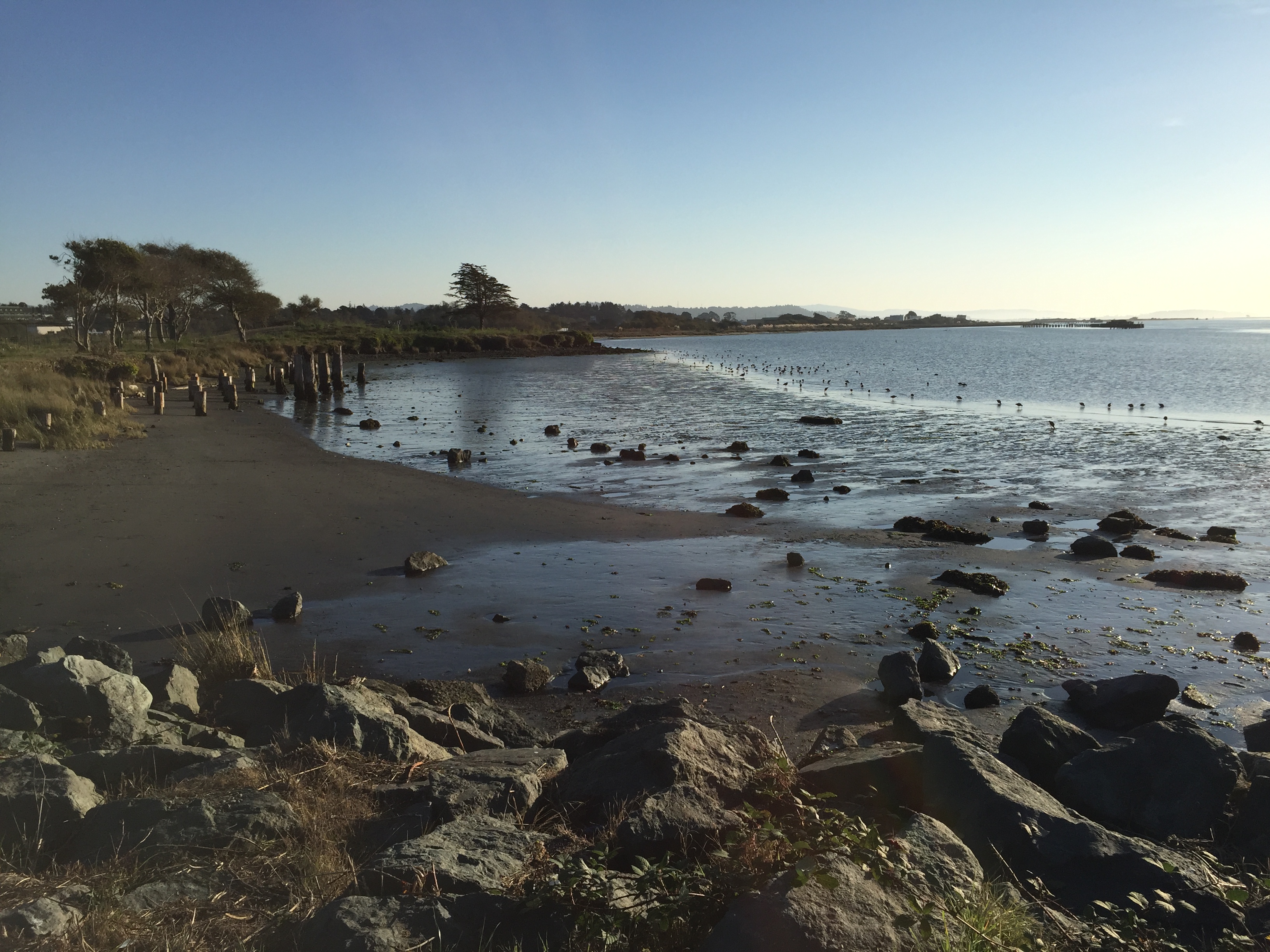
A watershed rich with industrial history, Humboldt Bay continues to balance competing business interests. Jen Kalt is at the helm at Humboldt Baykeeper to watchdog local and regional decisions that impact Humboldt Bay – including the impending North Coast Dairy Order.
Surrounded by vast redwood forests, Humboldt Bay’s recent history teems with timber harvesting and development. Throughout the mid-1800’s and well through the 1900’s, these redwood forests were seen as prime for building new housing and cities throughout the West – particularly the rapidly growing city of San Francisco. Sawmills used by this thriving timber industry have since dotted the shoreline of Humboldt Bay, spreading sawdust and polluting the shoreline with dioxin.
Today, timber no longer dominates the economy of Humboldt Bay, which now produces the majority of oysters sold in California. The bay is a seemingly-pristine picture of agrarian fields alongside freshwater wetlands and sandy, forested dunes that attract protected migratory birds throughout the year. Meanwhile, dairies surround these wetlands with herds as large as 400 cows that seem to embody the well-known slogan that “happy cows come from California.” On the outskirts of these fields is Humboldt’s booming shellfish industry, drawn to the bay for its “clean bill of health” in regard to oyster diseases, making it the only enclosed bay in California allowed to export oyster “seed” around the world.
Despite this “clean bill of health,” water pollution continues to be a problem. Fecal coliform bacteria causes grave concern as it drains into the bay from cattle and dairy farms, human septic systems, and other sources. This causes serious problems for oyster producers along the bay, who must shut down their harvesting operations because of public health threats when fecal coliform levels soar following heavy rainstorms. In some years, this could mean that oyster producers lose over 80 days of work.
This summer, the North Coast Regional Water Quality Control Board (Regional Water Board) has an important opportunity to better manage these public health crises and contamination events into Humboldt Bay. To protect the delicate ecosystem of Humboldt Bay and to support its thriving oyster industry, the Regional Water Board must outline explicit “Best Management Practices” in its forthcoming Dairy Order to prohibit dairy cows from entering and defecating in streams, require the use of vegetation buffers to capture and filter manure before it runs into the bay, and require robust testing of surface water runoff to test for dangerous bacteria and alert when individual dairy management practices need revisiting and improvement. Of critical importance, the Regional Water Board must regulate the discharge of dairy waste through a National Pollutant Discharge Elimination System (NPDES) permit to offer increased protections to the public under the federal Clean Water Act – protections that include a chance for the public to review and comment on individual dairies’ nutrient management plans to better manage the manure that seeps into soil and our waterways.
Without these actions, it is unclear how the Regional Water Board’s forthcoming Dairy Order will lead to actual improvements in water quality for Humboldt Bay – and its delicate ecosystem and the oyster industry dependent on its waters.

Policy Manager Kaitlyn Kalua represents CCKA and its member Waterkeepers in state regulatory and legislative forums to advance statewide water policy.



